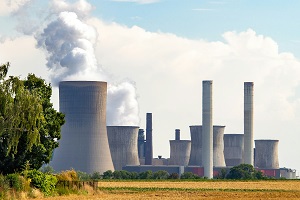
Environmental Exposures for Power Plants
Power plants generate and disburse power to businesses and homes across the country. People in surrounding areas may be exposed to dangerous toxins as a result of activities at these sites, many of which can impact their health and overall quality of life. Employees—including electricians, pipefitters, welders, and other contractors—working at these locations must also be aware of direct exposure to pollutants. Whether a power plant is fully operational or no longer in use, these exposures can remain on the property and in the soil for years.
Exposures include general hazardous emissions, residue, and air quality concerns relating to:
- Nitrogen and sulfur oxides
- Asbestos
- Arsenic
- Radiation
- Industrial use of borates
- Mercury
- Fine particulate matter that can affect the cardiovascular, respiratory, and central nervous systems
- Any component used for combustion control, post-combustion control, and scrubbers.
Site Pollution Liability for Power Plants
The environmental insurance policy that is most applicable to addressing pollution concerns at a power plant is a Site Pollution Liability policy, also known as a Premises Pollution policy, EIL, or PLL. This product is designed to provide coverage for unknown, historical, and future environmental liabilities such as claims for bodily injury, property damage, and cleanup costs as a result of a pollution event.
News Stories and Sources Involving Power Plants
Environmental Exposures in the U.S. Electric Utility Industry
Environmental arsenic exposure from a coal-burning power plant
Electric power plant emissions and public health
Asbestos Exposure in Power Plants
Occupational Exposures During Routine Activities in Coal-Fueled Power Plants
Emissions of Hazardous Air Pollutants from Coal-fired Power Plants
The 5 Biggest Sources of Mercury Pollution
For more information on environmental exposures for power plants, contact us.
Type: Blog
Topic: Power Plants